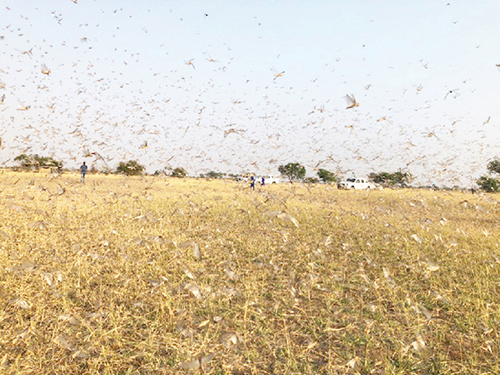Staff Reporter
The Ministry of Agriculture, Water and Land Reform is hard at work to mitigate the locust outbreak in the southern parts of the country, which has had devastating effects. The ministry’s public relations officer, Jonah Musheko said the ministry has enough pesticides in stock to fight the outbreak and will soon commence with the exercise.
“Regarding pesticides, so far we have sufficient stock to fight this outbreak. We do not buy a lot of it but enough to cater for the outbreak(s) based on our assessments on the ground (inclusive of both regions and any other types of crop pests).”
Musheko said the ministry has already deployed teams from other regions to join hands with the regional teams in the two affected regions of Hardap and //Kharas.
He said they are open to work with stakeholders such as agriculture unions, farmers› representatives and others to bring the situation under control.
He added best approaches to the outbreak are currently being determined as the aerial spray method used in the previous outbreak might not be effective for the current outbreak.
“Aerial spraying is practical when there’s an infestation of locusts in a large area. In the case of the two affected regions, the affected areas are very vast-locusts are in patches (groups) for instance there are patches on a farm of 50 hectares.
“This makes it economically impossible to use aerial spraying as it is costly (S&T for pilots, commanders, fuel etc). So the most economical way to fight these types of infestation is with vehicle mounted sprayers and handheld sprayers. Aerial spraying will only come in if we see that the nature of the infestation does fit this, or else it will be wasting resources we already don’t have abundantly,” Musheko said.
He noted that given the landscape of these two regions, there are some places that are way too rocky and not reachable with vehicles. Also, there are some areas that keep moisture longer, which are perfect breeding areas for locusts, said Musheko.
“Given the number of accidents, we decided to dedicate one or two teams to be monitoring infestations near the road. The temperature of the two regions is becoming cold and by nature, the locusts don’t survive well in cold weather.
“We all know that the road surface is usually warmer and these insects would definitely opt to be on the road surface in the morning hours and later at sunset,” he noted.


